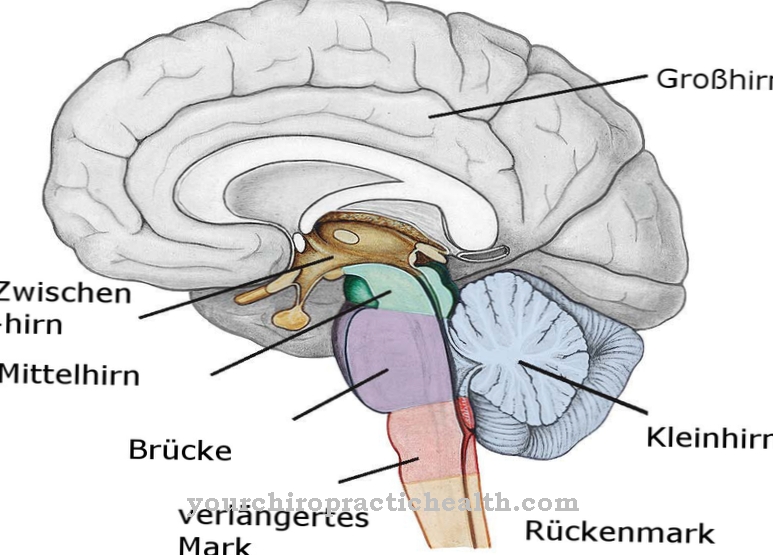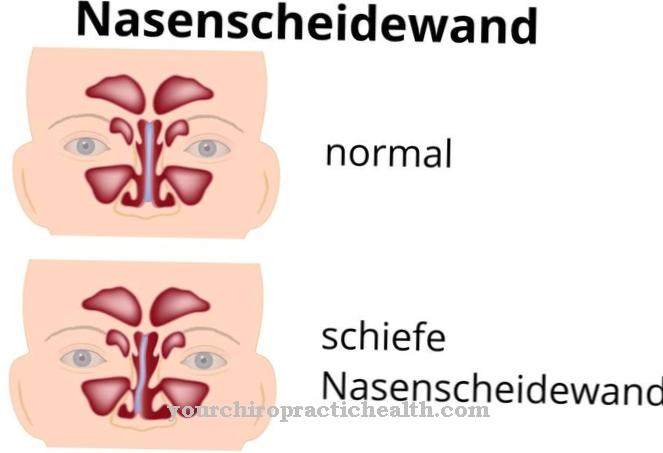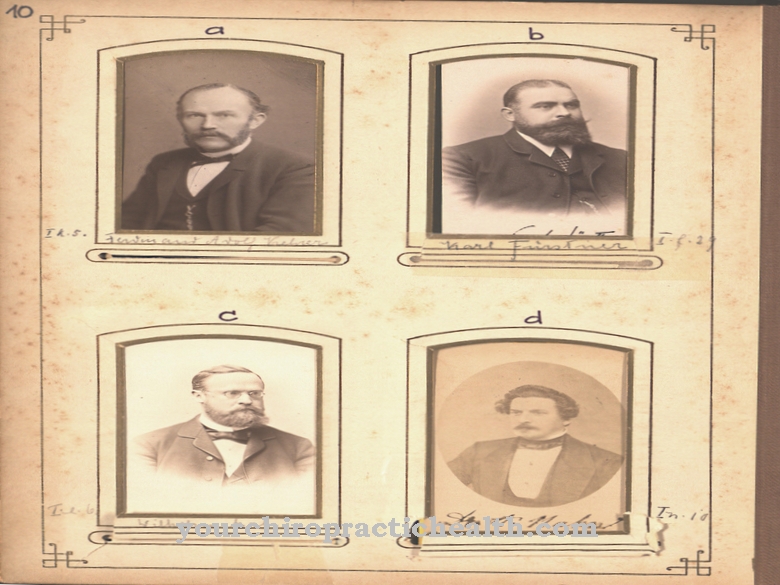As Blind spot is a small, physiologically caused, slightly elongated-oval visual field loss caused by the location of the papilla, the exit gate of the collected optic nerve fibers.
The retina is interrupted in the area of the papilla so that no light stimuli can be perceived at this point. Normally, the blind spot is not perceived because the brain has an ingenious "image processing program" at its disposal and complements the blind spot according to the environment and logic.
What is the blind spot?
The blind spot is physiological because the bundled optic nerve fibers, which are derived from each photoreceptor (rods and cones), leave the eye in the area of the papilla in order to conduct the signals to the visual center. In addition, blood vessels are also passed through.
The retina is perforated in the area of the papilla, so that no photoreceptors can be located there. The papilla lies about 15 degrees towards the nose outside the visual axis, which ends directly in the yellow spot, the zone with the sharpest and best color vision. The size of the visual field loss caused by the papilla is about 5-6 degrees horizontally and about 7-8 degrees vertically.
The papillae of both eyes are arranged in such a way that the blind spots in the visual field do not overlap. This ensures that when seeing with both eyes, no object is simultaneously in the blind spot of the left and right eye, which would mean that it could no longer be perceived.
Anatomy & structure
The papilla (papilla nervi optici), the passage through the retina that causes the blind spot in the field of vision, has a diameter of about 1.6 to 1.7 mm. Individually, the papillae can also deviate significantly from the above mean, so that macropapillae or micropapillae are used when the size is appropriate.
With an ophthalmoscopy, an optical inspection of the fundus, the papilla with the bundled nerve fibers is clearly visible. Their pale red color stands out clearly against the dark red color of the retina. The combined, purely sensory, afferent nerve fibers of the individual photoreceptors leave the eye through the optic nerve, also called the second cranial nerve, and pass the signals on to certain areas in the brain.
In addition, the papilla is used by the central artery of the eye (arteria centralis retinae) as an entrance port and by the central ocular vein as an exit passage. The papilla is not only available to the photoreceptors to derive their action potentials, but also serves the central supply and disposal of the eye through the blood circulation.
Function & tasks
The blind spot itself has no function or task, it is more to be seen as a problem or necessary evil that exists due to the design of the eye. The papilla, which causes the blind spot, has the task of keeping the disadvantages of the blind spot as low as possible and still fulfilling its function of guiding the bundled nerve fibers of the photoreceptors and the necessary blood vessels into and out of the back wall of the eye without any problems.
In principle, there is a conflict of objectives to make the papilla as narrow as possible in order to keep the blind spot as small as possible, but this can lead to functional impairments of the nerve fibers and blood vessels through pressure lesions. Since the visual field loss (scotoma) of the blind spot cannot be prevented physiologically and mechanically, the visual center in the brain has developed a virtual image processing program in an evolutionary way that allows, when seeing with both eyes (binocular vision), the visual field losses with visual impressions of each to complement the other eye so that the blind spots cannot be perceived consciously.
Even when seeing with only one eye (monocular vision), the blind spot is not perceived because the visual center complements the scotoma virtually analogous to the surrounding visual impressions. The process is called filling-in. This can be checked in a simple experiment. If we monocularly look at a regular pattern that has a small gap so that the gap coincides with the blind spot, the pattern suddenly appears to complement each other. We no longer see the gap in the pattern because the visual center has no knowledge of it due to the real blind spot and logically complements the visual field with the surrounding pattern. We see something seemingly real that only exists virtually.
You can find your medication here
➔ Medicines for eye infectionsDiseases
Diseases and ailments that can be associated with the blind spot necessarily relate to the papilla and possible dysfunction of the nerve fibers and blood vessels that pass through it. The most common disease of the papilla is papillary edema, also known as papillae congestion.
The disorder usually occurs on both sides and in an advanced stage leads to pressure lesions on the optic nerves and blood vessels. The optic disc edema is easily visible when looking at the fundus. The color of the papilla changes from pale pink to red or gray-red and gray-white deposits become visible. The edges of the papilla are severely swollen at this stage. In the more advanced atrophic phase in which the tissue dies, the papilla appears very pale and optic nerve fibers irreversibly die.
This leads to typical failures in the visual field. As a rule, secondary diseases such as increased intracranial pressure due to cerebral haemorrhage or brain tumors trigger the papillary edema. But they can also be caused by optic nerve inflammation based on neurotoxins or diseases such as borreliosis, multiple sclerosis and others. Chronic high blood pressure and diabetes mellitus can cause fat deposits in the optic artery and lead to papillary infarction.



























